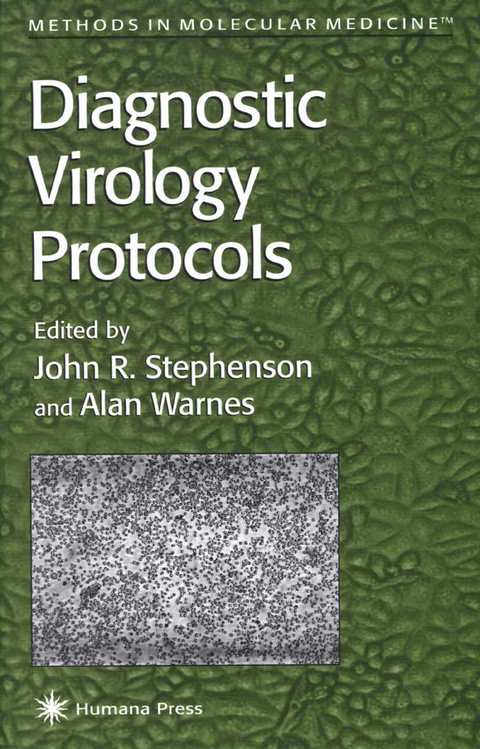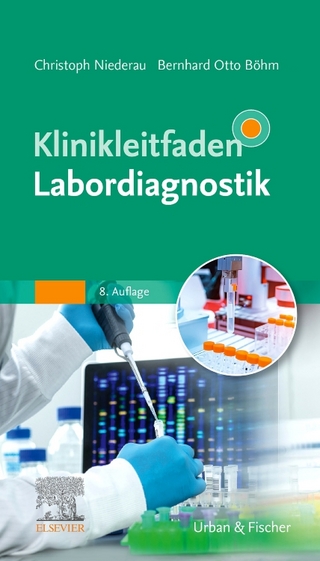
Diagnostic Virology Protocols
Humana Press Inc. (Verlag)
978-0-89603-401-3 (ISBN)
The accurate and reliable diagnosis of transmissible diseases is the most powerful weapon available to ensure their control, and in some cases eradication. The detection of parasites in clinical cases, companion and farm animals, and in the environment is relatively easy since many of them are visible to the naked eye, and those that are not are readily detected by light microscopy. Fungal infections can similarly be determined. Bacteria are somewhat harder to detect. Although their presence can frequently be detected by light microscopy, differential diagnosis, beyond their gross morphology, is almost always impossible. However, most bacterial pathogens can be cultured in the laboratory and can be accurately identified by combinations of a series of simple tests such as morphology, staining, antibiotic sensitivity, biochemical analyses, nutrient dependence, and phage sensitivity. Viruses, however, have proved much more difficult; their size and absolute dependence of the host cell for propagation have rendered useless the methods traditionally used for other microorganisms. Until the development of tissue culture in the middle of this century, diagnosis was entirely dependent on the skill and experience of the clinician. But this was an unreliable process since many of the common virus infections exhibit similar clinical symptoms, such as coryza, exanthema, vomiting, diarrhea, neuralgia, and lethargy. Indeed many viral infections display clinical signs that are indistinguishable from bacterial or parasitic infections.
Rapid Detection of Adenovirus from Fecal Specimens.- Alphaviruses.- Detection of Human Caliciviruses and Astroviruses in Stools by RT-PCR.- Enteroviruses and Rhinoviruses.- Rapid Detection and Identification of Dengue Viruses by Reverse Transcriptase/Polymerase Chain Reaction.- Hepatitis Viruses.- Herpesviruses.- Diagnosis and Direct Automated Sequencing of HIV-1 From Dried Blood Spots (DBS) Collected on Filter Paper.- PCR for the Detection of Influenza Viruses in Clinical Material.- Lyssaviruses.- Methods for Detecting Antimeasles, Mumps, and Rubella Virus Antibodies.- Papillomaviruses.- Diagnosis of Parvovirus B19-DNA by Dot-Blot Hybridization.- Polioviruses.- Poxviruses.- Respiratory Syncytial Virus and Other Pediatric Respiratory Virus Infections.- Detection and Molecular Epidemiology of Rotavirus by RNA Gel Electrophoresis.- Detection of PCR-Amplified Sandfly Fever Sicilian Virus RNA by Calorimetric Enzymatic Immunoassay.- Time-Resolved Fluorescence.- Enzyme-Linked Immunosorbent Assays.- Dynamic Analysis of Viral Populations by Direct DNA Sequencing and Solid-Phase Technology.- Robotic Analyzers.- The Detection of Enteroviruses in Water and Associated Materials Using the Polymerase Chain Reaction.- Recombinant Antigens in Viral Diagnosis.- NASBA.- Oligonucleotides.
| Erscheint lt. Verlag | 28.8.1998 |
|---|---|
| Reihe/Serie | Methods in Molecular Medicine ; 12 |
| Zusatzinfo | XIII, 370 p. |
| Verlagsort | Totowa, NJ |
| Sprache | englisch |
| Maße | 152 x 229 mm |
| Themenwelt | Medizin / Pharmazie ► Medizinische Fachgebiete ► Mikrobiologie / Infektologie / Reisemedizin |
| Studium ► 2. Studienabschnitt (Klinik) ► Anamnese / Körperliche Untersuchung | |
| Studium ► 2. Studienabschnitt (Klinik) ► Pathologie | |
| ISBN-10 | 0-89603-401-1 / 0896034011 |
| ISBN-13 | 978-0-89603-401-3 / 9780896034013 |
| Zustand | Neuware |
| Haben Sie eine Frage zum Produkt? |
aus dem Bereich


